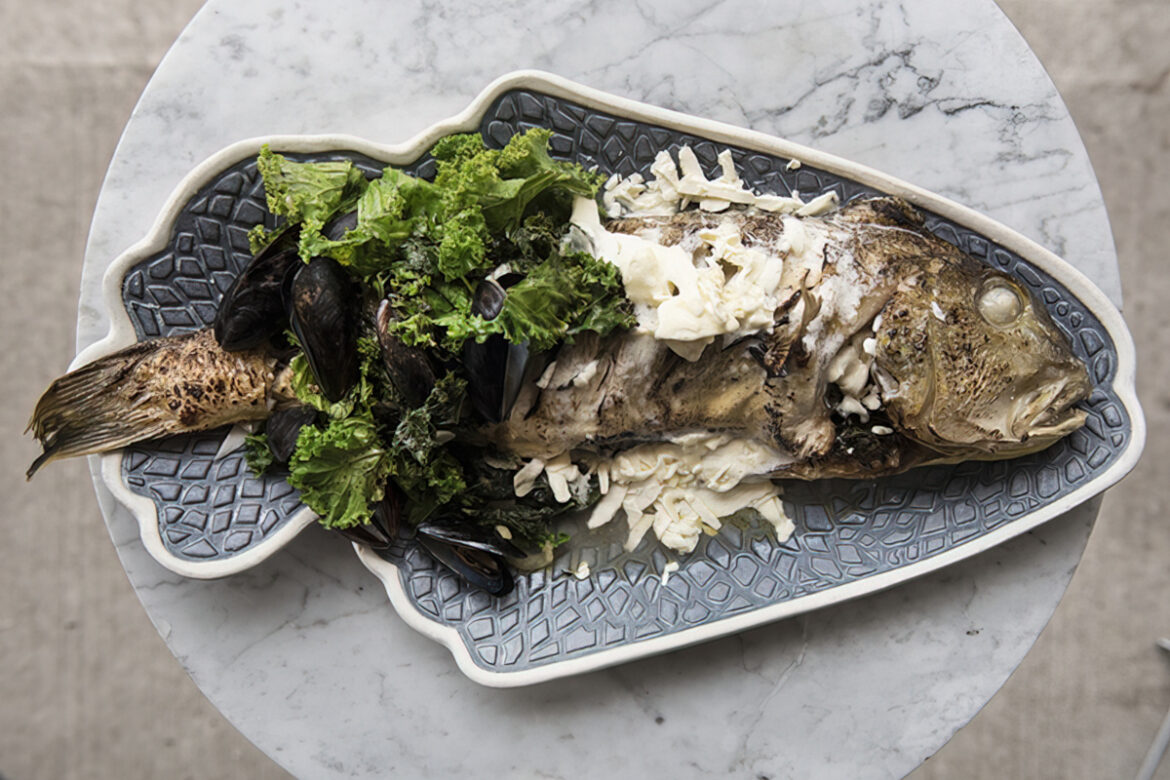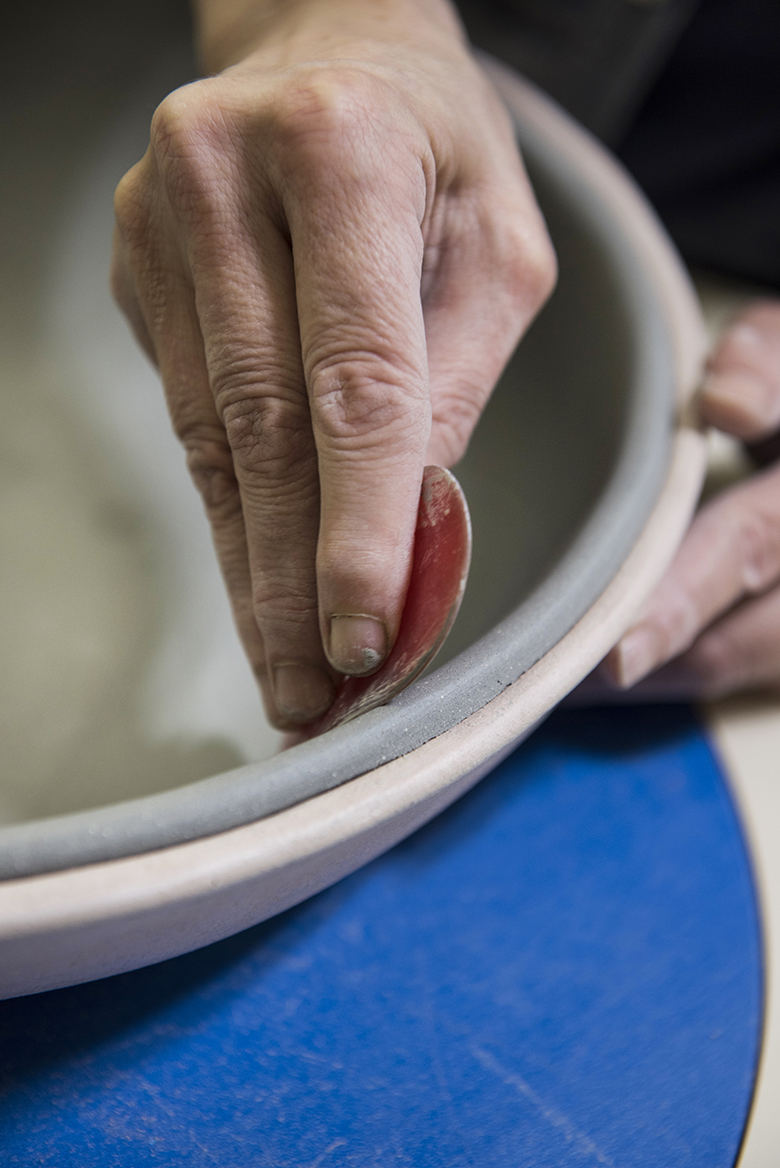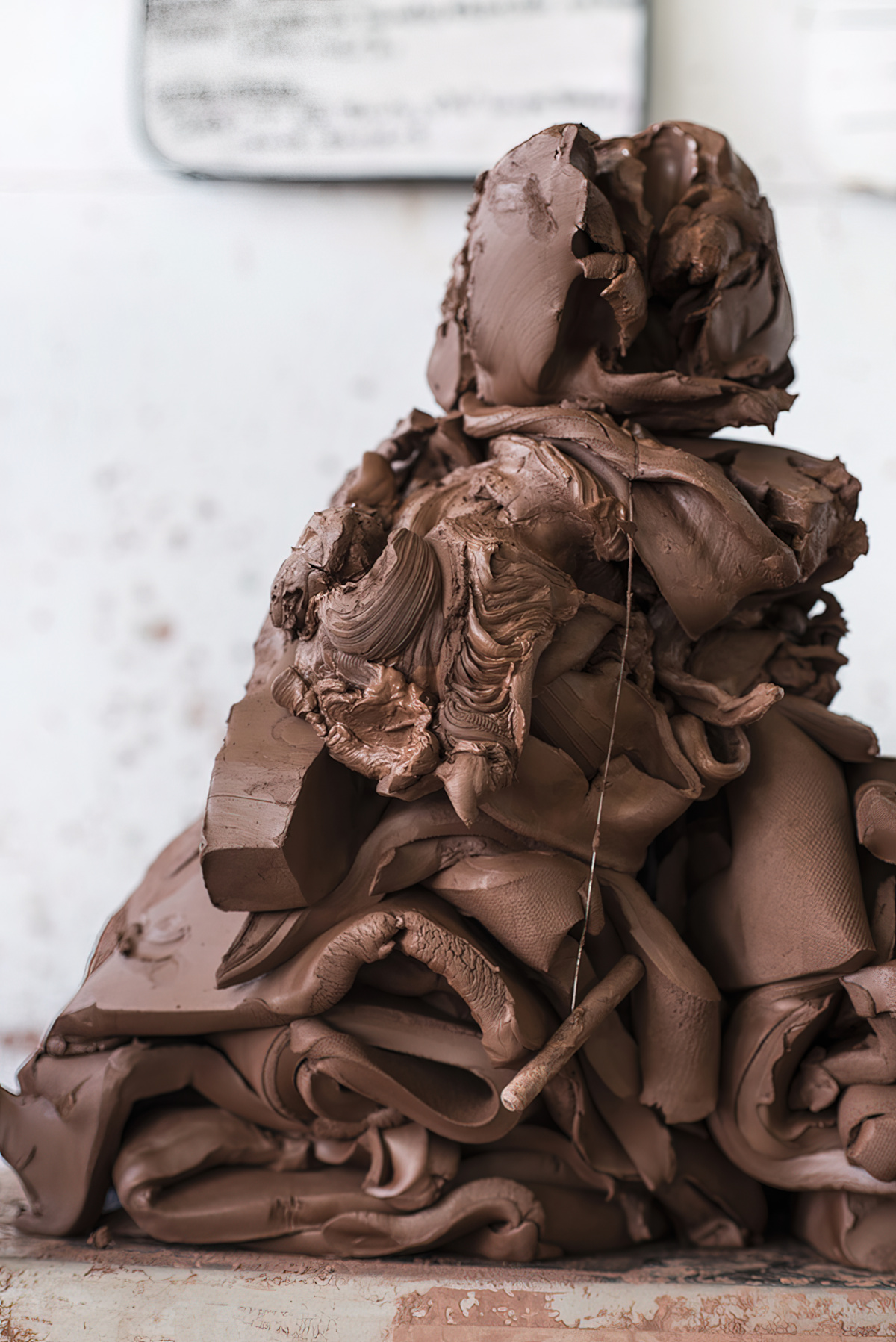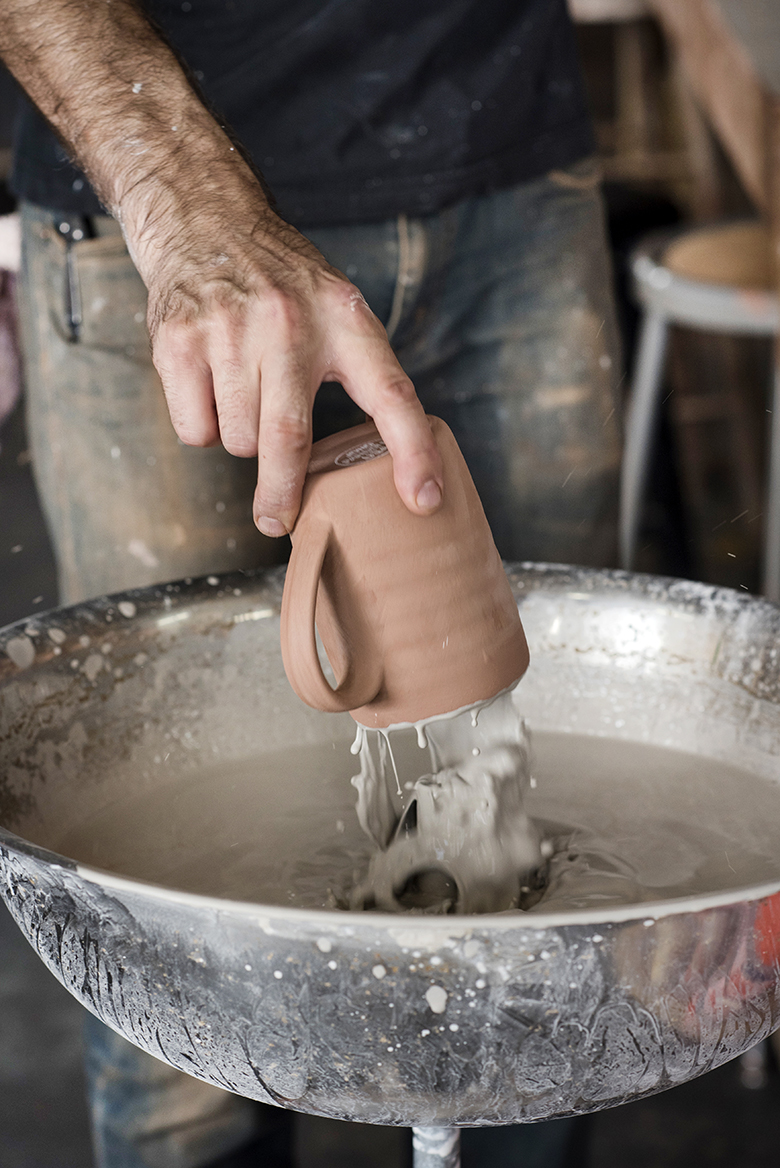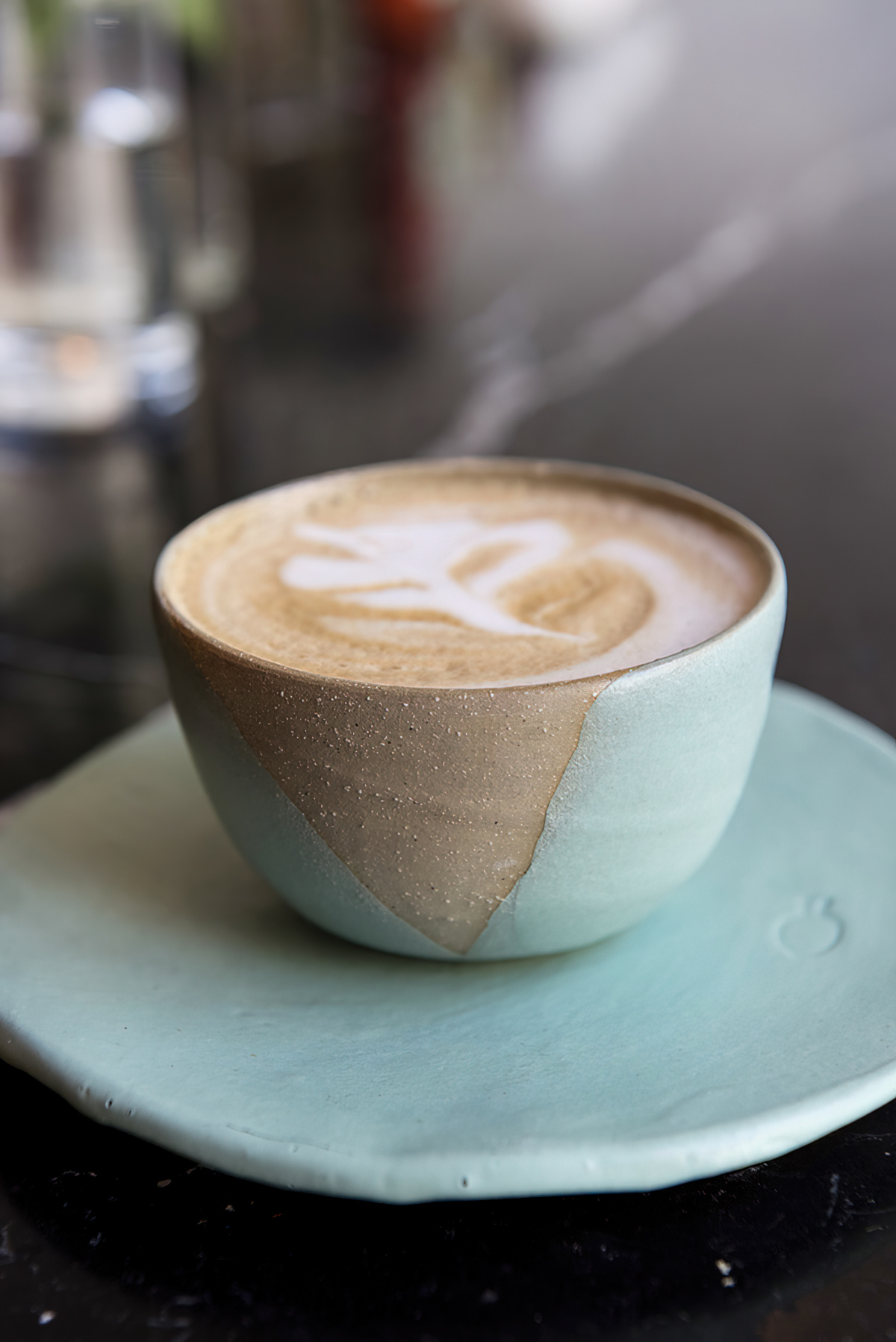In 2014, when Momofuku Ko moved from its home of seven years on First Avenue in Manhattan’s East Village half a mile downtown to 8 Extra Place, Su Wong Ruiz seized upon the opportunity for the restaurant to not only add seats but make some upgrades.
“The original Ko was highly utilitarian,” explained Ruiz, who is the restaurant’s general manager. “When we moved, we decided to grow up, indulge our luxurious desires and get a little more custom.” High on the list: swapping the restaurant’s plain Jane white china for handmade stoneware.
After a thorough search, Ruiz and Ko’s chef, Sean Gray, began sourcing much of their tableware from Brooklyn-based potter Wynne Noble, who has since made them an array of striking hand-hewn pieces, glazed in earthy beiges and moody blues (items by MUD Australia and Maine-based ANK Ceramics round out Ko’s collection). The switch to artisan ceramics traced Ko’s evolution from a bare-bones chef’s counter to something more elevated. But it also reflected a transition that had begun to take hold throughout the industry regarding how ambitious restaurants thought about their tableware.
It all seems to have started, like so much in the world of food, at Chez Panisse. Back in 2006, the Berkeley restaurant developed its own elegant dinnerware collection with a then little-known, Sausalito-based pottery studio called Heath Ceramics (Noma, in Copenhagen, commissioned work from a small Danish studio the very same year). Ever since, chefs have slowly been gravitating toward handmade alternatives to the glossy white porcelain that dominated restaurant tables for decades.

The movement hit New York City in earnest in 2012, when the now-shuttered NoMad Hotel and Eleven Madison Park both commissioned stunning tableware sets from the Union City, Jersey–based ceramicist Jono Pandolfi. Now, that earthy, artisan look seems to be everywhere, with restaurants from Contra to Atera, Gramercy Tavern, Lilia and many others working with local potters on their dishware.
For anyone who has spent time in the presence of handmade pottery, it isn’t hard to understand why. “Every time Wynne drops off an order, you just want to stare at it and caress it forever,” Ruiz told me. “There’s this sense of quality and true beauty.” Local ceramics function as a visual extension of a farm-to-table ethos, and stoneware’s rustic mien fits with today’s more naturalistic approaches to plating. There’s even an Instagram angle to it all: Those darker, matte surfaces tend to be more flattering in photographs than glossy white ones.
There is, however, one big hitch: Artisan pottery is a major investment. Handmade ceramics of the kind that Noble and Pandolfi produce can cost restaurants anywhere from three to six times as much as standard-issue white china. For those outside the tasting menu bracket, that often means coming up with creative ways to incorporate them when extensive custom tableware collaborations are out of reach.

For instance, when Ko added a more affordable à la carte bar service to complement its tasting menu offering at the beginning of 2018, Ruiz and Gray knew that commissioning more of the same echelon of handmade pottery was out of the question. So they’ve purchased predominantly metal tableware from the Danish brand Normann and are using individual handmade pieces from their existing collection opportunistically. Ko has also bought a small number of bowls from Haand, in North Carolina; there, ceramics are handmade using an efficient technique called “slip-casting,” which makes them a little more affordable.
In 2015, Dig Inn, the farm-to-counter restaurant group with almost two dozen locations, decided to dip a toe into the world of handmade ceramics. “A lot of Dig Inn’s team members were eating at restaurants that were using beautiful tableware, and we thought we could do it, too,” Taylor Lanzet, the brand’s director of supply and sustainability, explained. High on the chain’s list of priorities was durability, since anything they used would need to withstand the wear and tear of a high-volume dining room and being washed at high temperatures and reused several times a day. That led the brand to Noble, whose handmade stoneware has earned a reputation in the industry for its resilience.
Noble developed a graceful, shallow bowl for Dig Inn that was also exceptionally sturdy, stacked well and could work to serve anything on the restaurant’s menu. In the past three years, Dig Inn has bought roughly 5,000 of them. Lanzet says the bowls are several times the cost of standard porcelain options, but she believes that the marketing value to Dig Inn justifies that cost. “We wanted to elevate the dine-in experience and show that we’re not just someplace where you grab a bowl and run to the office,” Lanzet said. “They make our food look really beautiful and present what we’re trying to do with food in a really visual way.”


